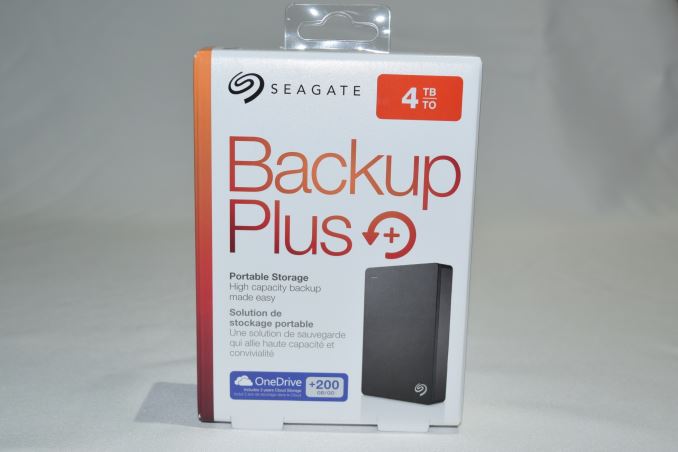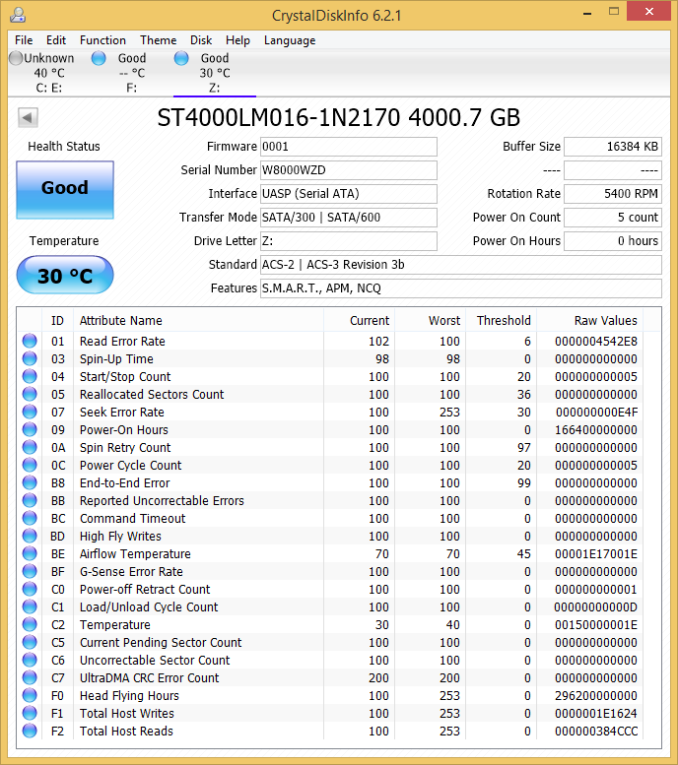Seagate Backup Plus Portable 4TB USB 3.0 Drive Review
by Ganesh T S on August 4, 2015 8:00 AM EST
Introduction
The rise in popularity of USB 3.0 has enabled a large number of high-speed bus-powered storage devices. Flash drives and external SSDs can take advantage of the high-speed nature of the interface. They have slowly been increasing in capacity too, and we even had a 1TB portable SSD from Samsung earlier this year. Unfortunately, the cost per GB is still too high for the average consumer. From the perspective of that market, bus-powered external hard drives (2.5") are hard to beat. 2TB USB 3.0 drives have been around for some time now, but the 4TB mark in the portable 2.5" form factor had only been achieved with dual drives and external power. Seagate recently launched the Backup Plus Portable 4TB USB 3.0 drive based on one of the first 4TB 2.5" drives in the market.
The Backup Plus Portable 4TB USB 3.0 drive internally carries a Seagate/Samsung Momentus ST4000LM016 drive. Information about this drive is currently sparse on Seagate's website. Suffice to say that this drive will not fit most notebooks (it is not thin enough). User reports based on the raw drive indicate that the thickness comes in around 15mm, which should be OK for NAS units and other applications. In any case, CrystalDiskInfo provides a lot of information about the internal drive.
Important aspects of the drive include:
- 16 MB buffer
- 5400 RPM spindle speed
- SATA III 6 Gbps interface
It appears that the ST4000LM0016 uses five platters with a 800GB/platter design to achieve the capacity point. The USB 3.0 bridge chip also supports UASP and S.M.A.R.T passthrough. The unit has dimensions of 114.5 mm x 78 mm x 20.5 mm and weighs 541 grams. It comes with a USB 3.0 Type-A male to USB 3.0 micro-B male cable.
As portable hard drives become more and more of a commodity, vendors are attempting to put in value-adding features to the product. The Backup Plus Portables comes with 200GB of OneDrive storage valid for two years. In addition, we also have the ability to connect the unit to the Lyve app that provides photo / video management in the cloud. It also comes with a basic backup configuration software in the form of the Seagate Dashboard. We will be taking a brief look at these value added features after discussing the benchmark numbers.












47 Comments
View All Comments
fjcamry - Tuesday, August 11, 2015 - link
I have a 2 TB Seagate external drive in a enclosure with holes. I can tell it's running cool while the computer is on with Seagate dashboard always on start up. I turn off the computer when done using it , maybe leaving it on Sunday for scheduled backups. I used to have a motherboard program showing how many rpms the drives all ran at. That was with another system that I built. So my question is how can I see how many rpms my external drive is without having to search for a third party monitoring program to download and install? I've searched everything I know of on my windows 10 upgrade.darkfalz - Tuesday, August 18, 2015 - link
I have some 7200 RPM 3TB Expansion Desktop drives, they ran so hot I had to put a fan on them during extended file operations. The same enclosure 4TB / 5900 RPM run much cooler.prisonerX - Tuesday, August 4, 2015 - link
It's just you. Besides the marketing boost for the latest standard, it makes no sense relying on a standard that is superseded and being phased out. As the whole industry rolls forward new parts not only support the latest standard but are also lower power, have bug fixes and other performance improvements built in. Parts for the old standard become harder to find and more expensive over time and even if your product has a normal life cycle it's possible that the older part may no longer be available, which would immediately kill a possibly successful product.ddriver - Tuesday, August 4, 2015 - link
It might still be beneficial when transferring data that would fit in the HDD cacheCharonPDX - Tuesday, August 4, 2015 - link
Because most chipsets are now SATA3. Why bother creating a SATA2 chipset, or using an old, likely discontinued SATA2 chipset, when a SATA3 chispet is readily available and cheap?Daniel Egger - Tuesday, August 4, 2015 - link
I'm actually surprised that they still do SATA and add a SATA<->USB bridge. I recently bought a Toshiba drive (actually with the purpose to rip the case apart and use the SATA drive internally as backup) to find out that Toshiba got rid of SATA altogether and packed USB 3.0 directly on the drives mainboard.darkfalz - Tuesday, August 18, 2015 - link
I'm sure the few cents they save on the bridge chip would be lost having two separate PCB manufacturing runs.Cptn_Slo - Tuesday, August 4, 2015 - link
I think since USB 3 came out well after the wide adoption of SATA 3 no one has bothered to design a sata 2 to usb 3.0 interface.since there is a noticeable difference between usb 2 and 3 everyone just stuck with sata 3.
also sata 3 is probably cheaper on the drive side.
to do a sata 2 drive is a lot of work on the manufacturing side with 0 benefits.
hlmcompany - Tuesday, August 4, 2015 - link
USB 3.0 provides more power to the device. For these portable devices, it isn't just about data transfer speed, it's also about being sure the device has enough power. Of course this is host dependent. So, if the host is USB 2.0, power can still be an issue and a dual Type-A connector may be needed.Guspaz - Tuesday, August 4, 2015 - link
How can you not tear that sucker open? We must see the drive inside!